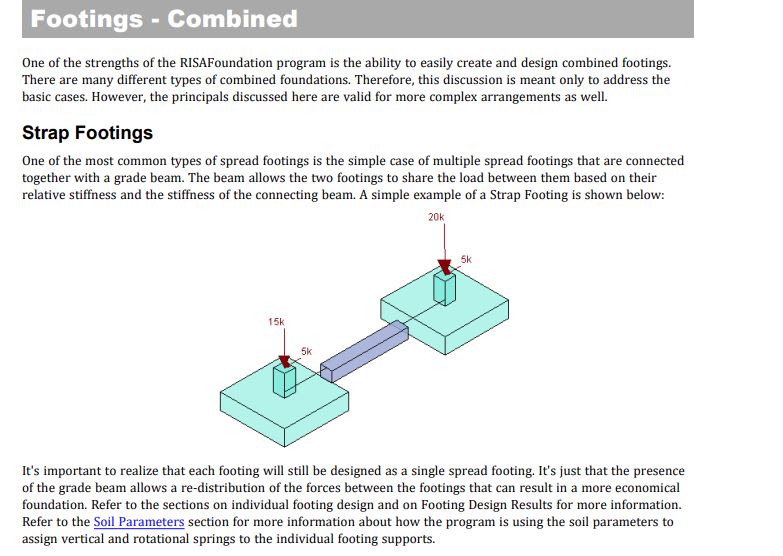Delmarva_Struct said:
In RISA Foundation, when modifying the subgrade modulus I find that a higher subgrade modulus produces a higher soil bearing pressure. However, in reality a higher subgrade modulus should reduce bearing pressure under the footing.
No, what you are seeing is what you should expect. The pressure in the spring model you use is just displacement multiplied by the modulus of the subgrade; when you increase the modulus, the constant multiplier increases. At first glance this may seem unintuitive, but if you have concentrated loads (column) on a slab supported on springs, using a constant modulus of subgrade and increasing it will not reduce deflection linearly at all points near the loaded area.
Delmarva_struct said:
I'm trying to design foundations with large column loads that are to be situated next to an existing building. I have large eccentricities for the column loading. My allowable soil bearing pressure is 3 ksf. No matter how large I make the foundation I am unable to resolve the higher bearing pressure at the eccentric column loading location. I've even tried connecting the eccentrically loading footings to adjacent footings (to make it work like a strap foundation) but still doesn't work. I tried making the slab 3 ft. thick, this helped with distributing some of the load but I'm still over the allowable. Making a slab 4ft thick seems unrealistic.
Are you modelling columns as beams connected to a plate? This will cause unrealistic results; consider adding some type of coupling that spreads out the column load and stiffness to an area on the slab.
A 4ft thick slab is not necessarily unrealistic. Much thicker slabs are used for many types of structures.
Delmarva_struct said:
Does anyone have any experience on how to resolve this ? Should I just make an engineering judgement that in reality the load will be more evenly distributed?
Engineering judgement is based on calculations and empirical evidence, not guessing, which your proposed argument amounts to. In this case, the result is also not a singularity in the classical sense (hard boundary conditions, corners etc.), so what you see on the FEA graphical output screen is what you get. I suggest making the model more realistic.
Delmarva_struct said:
I did read that I would have to calculate coupled spring stiffness values (based on Winkler foundation analogy maybe?) and enter them manually. Seems like a lot of extra effort. What is the point of using this software if I have to do all the tedious work? I will do it if I have to but hoping there's another solution...
There is no coupling in Winkler springs. However, you may receive more realistic results (see e.g., the literature) by using a higher modulus near the edges of the slab and a smaller one near its middle. Maybe a colleague can show you some publications where advanced 3D models are compared to Winkler models with stepped change in modulus of subgrade.
Regarding software, it is seldom a magic wand that solves all your problems.

